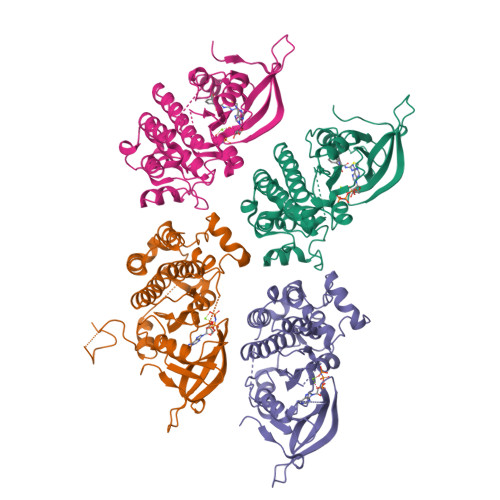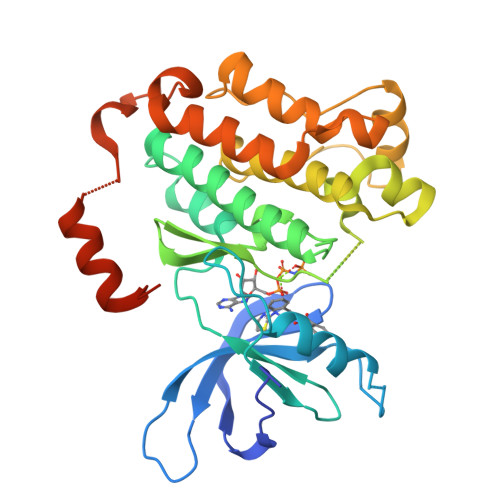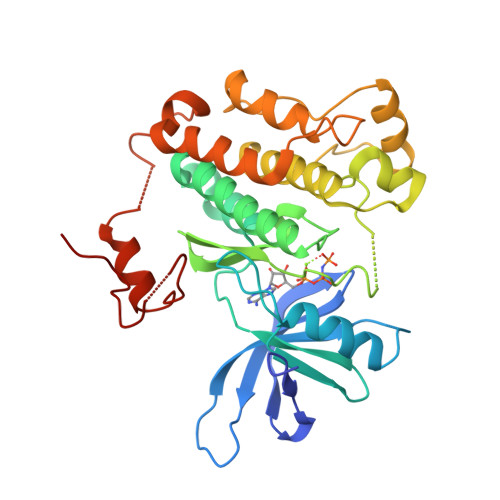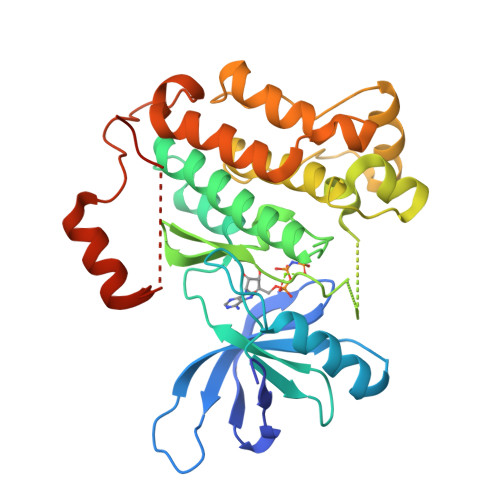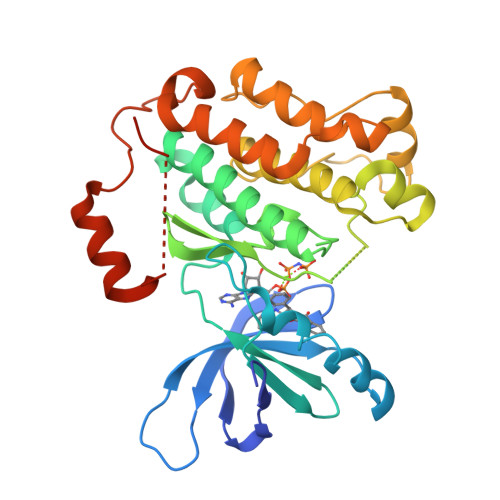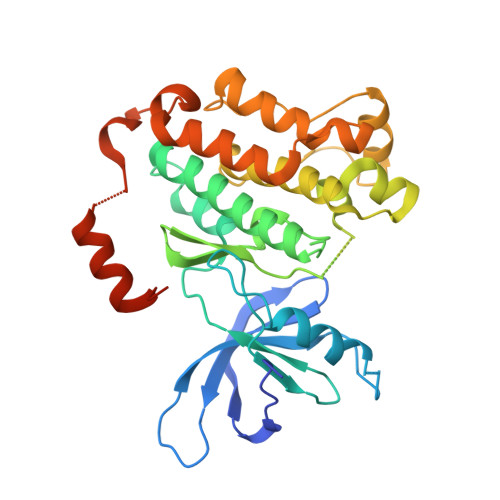Tilting the Scales toward EGFR Mutant Selectivity: Expanding the Scope of Bivalent "Type V" Kinase Inhibitors.
Wittlinger, F., Chitnis, S.P., Pham, C.D., Damghani, T., Patel, K.B., Mollers, M., Schaeffner, I.K., Abidakun, O.A., Deng, M.Q., Ogboo, B.C., Rasch, A., Beyett, T.S., Buckley, B., Feru, F., Shaurova, T., Knappe, C., Eck, M.J., Hershberger, P.A., Scott, D.A., Brandt, A.L., Laufer, S.A., Heppner, D.E.(2024) J Med Chem 67: 21438-21469
- PubMed: 39626019
- DOI: https://doi.org/10.1021/acs.jmedchem.4c02311
- Primary Citation of Related Structures:
8TO3, 8TO4 - PubMed Abstract:
Binding multiple sites within proteins with bivalent compounds is a strategy for developing uniquely active agents. A new class of dual-site inhibitors has emerged targeting the epidermal growth factor receptor (EGFR) anchored to both the orthosteric (ATP) and allosteric sites. Despite proof-of-concept successes, enabling selectivity against oncogenic activating mutations has not been achieved and classifying these inhibitors among kinase inhibitors remains underexplored. This study investigates the structure-activity relationships, binding modes, and biological activity of ATP-allosteric bivalent inhibitors (AABIs). We find that AABIs selectively inhibit drug-resistant EGFR mutants (L858R/T790M and L858R/T790M/C797S) by anchoring a methyl isoindolinone moiety along the αC-helix channel of the allosteric site. In contrast, related Type I 1 / 2 inhibitors target wild-type EGFR but are less effective against resistant mutants. This shift in selectivity demonstrates that mutant-selective AABIs classify as "Type V" bivalent inhibitors.
Organizational Affiliation:
Department of Pharmaceutical and Medicinal Chemistry, Institute of Pharmaceutical Sciences, Eberhard Karls Universität Tübingen, Auf der Morgenstelle 8, 72076 Tübingen, Germany.








